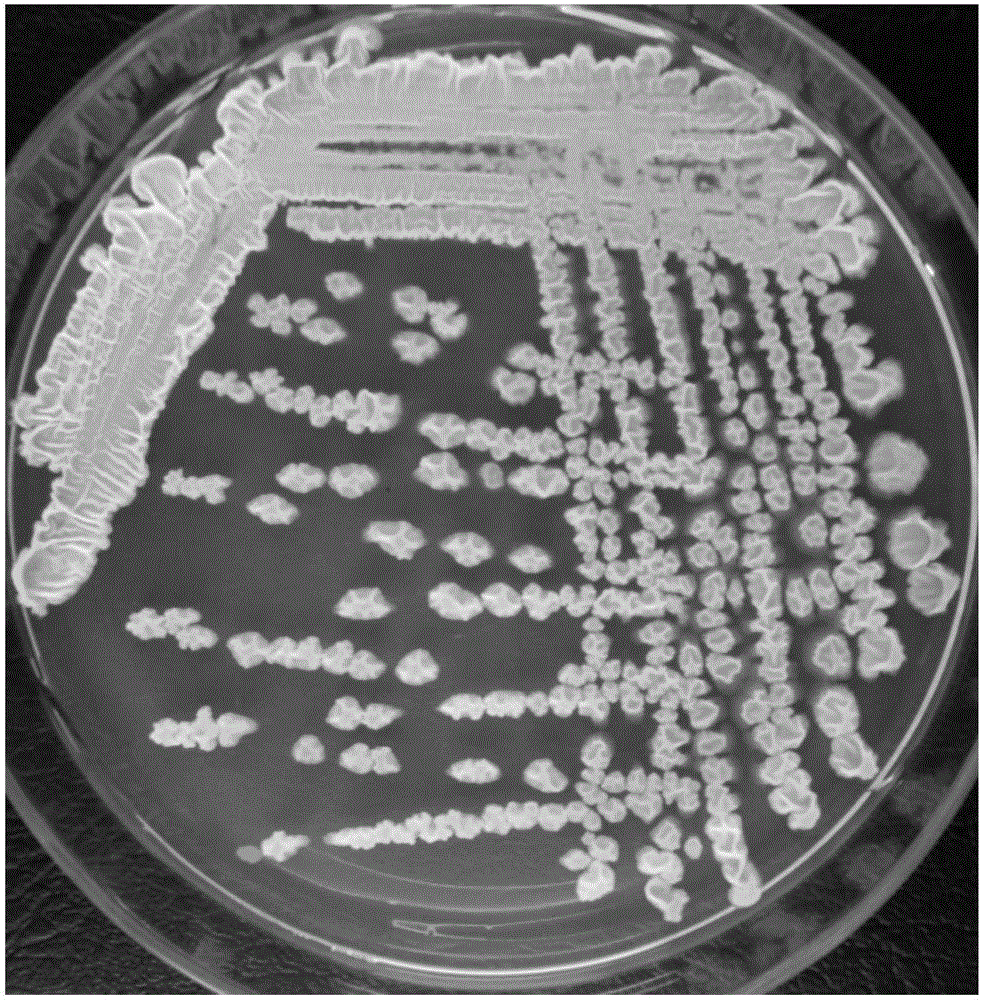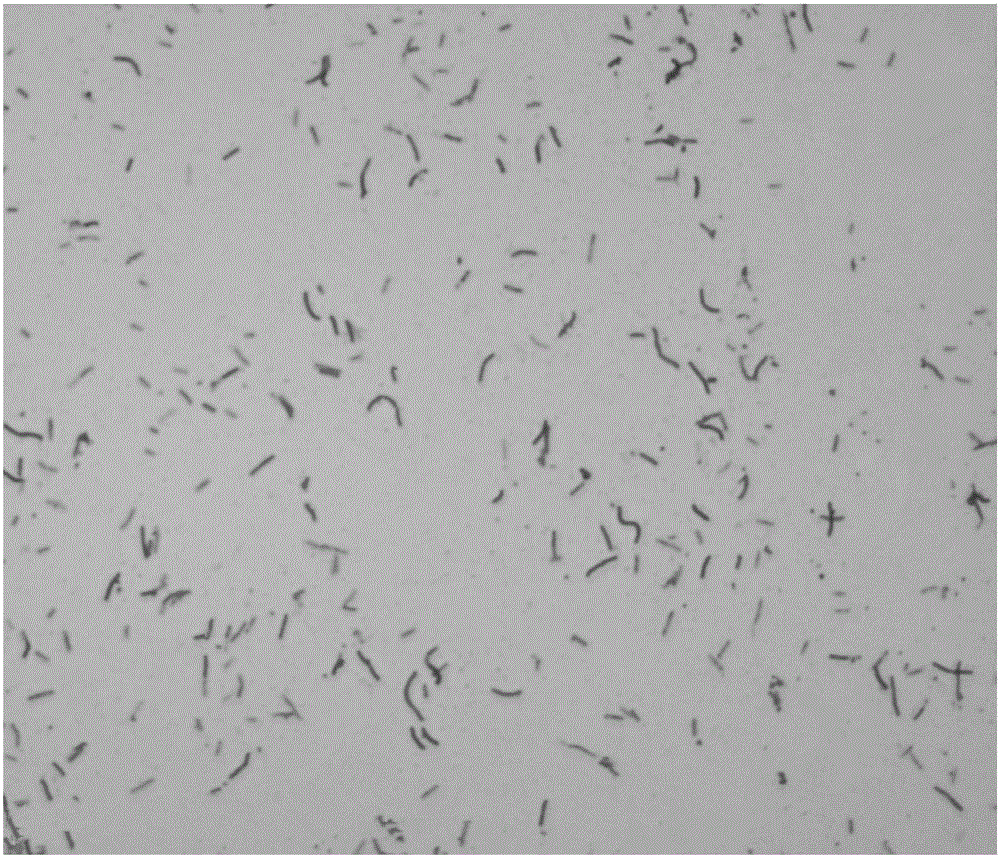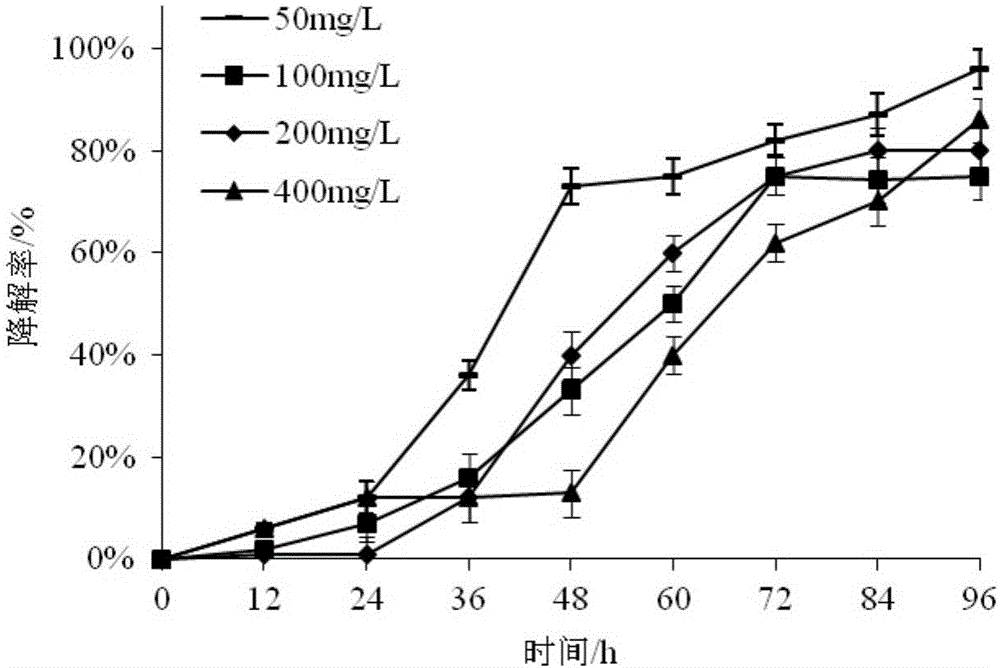Bacillus amyloliquefaciens and application thereof to degradation of carbamate pesticides
A technology of carbamates and amyloliquefaciens, which is applied to Bacillus amyloliquefaciens and its application in the degradation of carbamate pesticides, which can solve the problems of slow degradation rate and degradation rate of only 60%, and achieve rapid degradation , good application prospects, and the effect of protecting the ecological environment
- Summary
- Abstract
- Description
- Claims
- Application Information
AI Technical Summary
Problems solved by technology
Method used
Image
Examples
Embodiment 1
[0028] Embodiment 1 Isolation and identification of Bacillus amyloliquefaciens of the present invention
[0029] 1. Separation
[0030] Take 4 parts of vinegar sample, mix well respectively, take 5g each, place in a 250mL Erlenmeyer flask filled with 30mL LB medium, heat at 80°C for 10min, cool to room temperature and then add carbaryl to make the mass concentration 50 mg / L, shake culture at 30°C, 180r / min for 48h. After the end of the culture, the enrichment culture was carried out successively 3 times according to the inoculum size of 5%, each culture was 48h, and the concentration of carbaryl in the culture medium was gradually increased to make it reach 100mg / L, 200mg / L, 400mg / L respectively, and the obtained A pesticide-degrading bacterium, numbered JX-6.
[0031] 2. Identification
[0032] (1) Morphological, physiological and biochemical characteristics
[0033] Morphology: Pick the bacterial strain JX-6 and cultivate it on LB solid medium plate, record the morpholog...
Embodiment 2
[0043] Embodiment 2 Adopt Bacillus amyloliquefaciens of the present invention to degrade carbaryl in soil
[0044] Take Bacillus amyloliquefaciens JX-6 of the present invention, the preservation number is CGMCC No. 13143, referred to as strain JX-6. Strain activation: pick strain JX-6 into LB liquid medium, 30°C, 180r / min shaking culture for 24h; The LB slant was cultured at 30°C for 2 days for later use. Wash the bacterial cells on the lower slant with sterile saline and adjust the cell concentration to 10 6 cfu / mL, made into seed solution.
[0045] Add the seed liquid to the soil to be treated, mix well, and that's it.
Embodiment 3
[0046] Example 3 Using Bacillus amyloliquefaciens of the present invention to degrade carbaryl in water
[0047] Take Bacillus amyloliquefaciens JX-6 of the present invention, the preservation number is CGMCC No. 13143, referred to as strain JX-6. Strain activation: pick strain JX-6 into LB liquid medium, 30°C, 180r / min shaking culture for 24h; The LB slant was cultured at 30°C for 2 days for later use. Wash the bacterial cells on the lower slant with sterile saline and adjust the cell concentration to 10 8 cfu / mL, made into seed solution.
[0048] Add the seed liquid into the sample water to be treated, mix well, and that's it.
PUM
 Login to View More
Login to View More Abstract
Description
Claims
Application Information
 Login to View More
Login to View More - R&D
- Intellectual Property
- Life Sciences
- Materials
- Tech Scout
- Unparalleled Data Quality
- Higher Quality Content
- 60% Fewer Hallucinations
Browse by: Latest US Patents, China's latest patents, Technical Efficacy Thesaurus, Application Domain, Technology Topic, Popular Technical Reports.
© 2025 PatSnap. All rights reserved.Legal|Privacy policy|Modern Slavery Act Transparency Statement|Sitemap|About US| Contact US: help@patsnap.com



